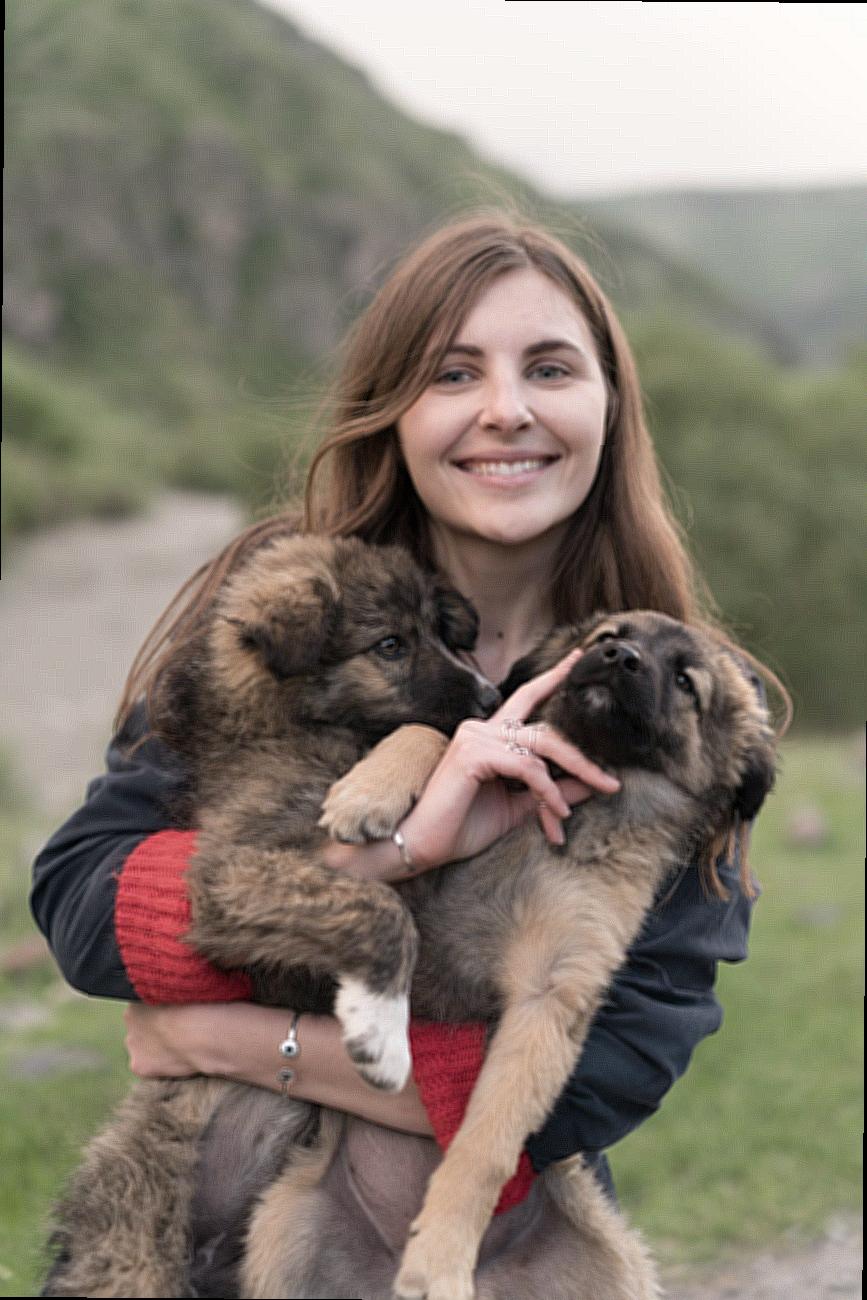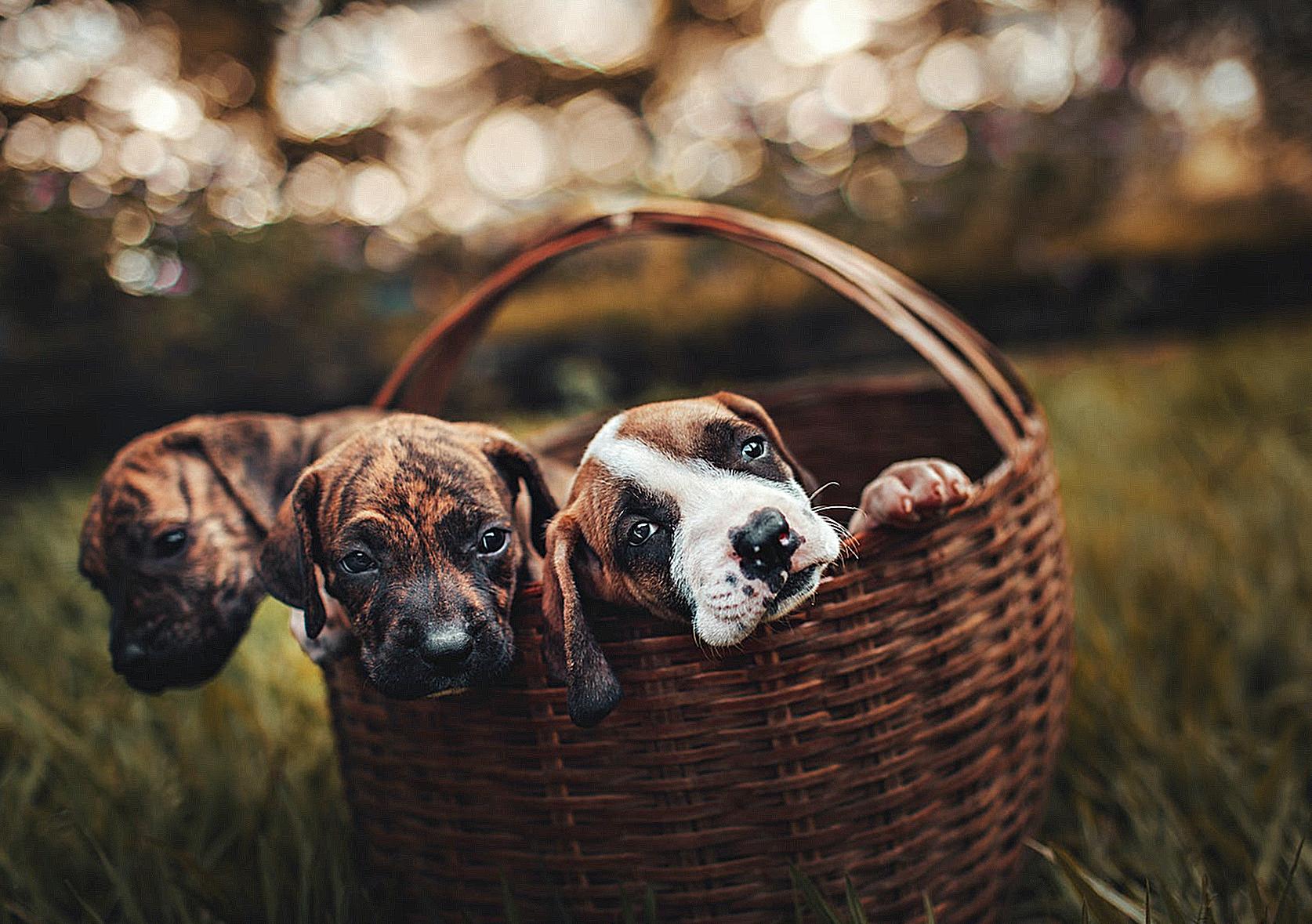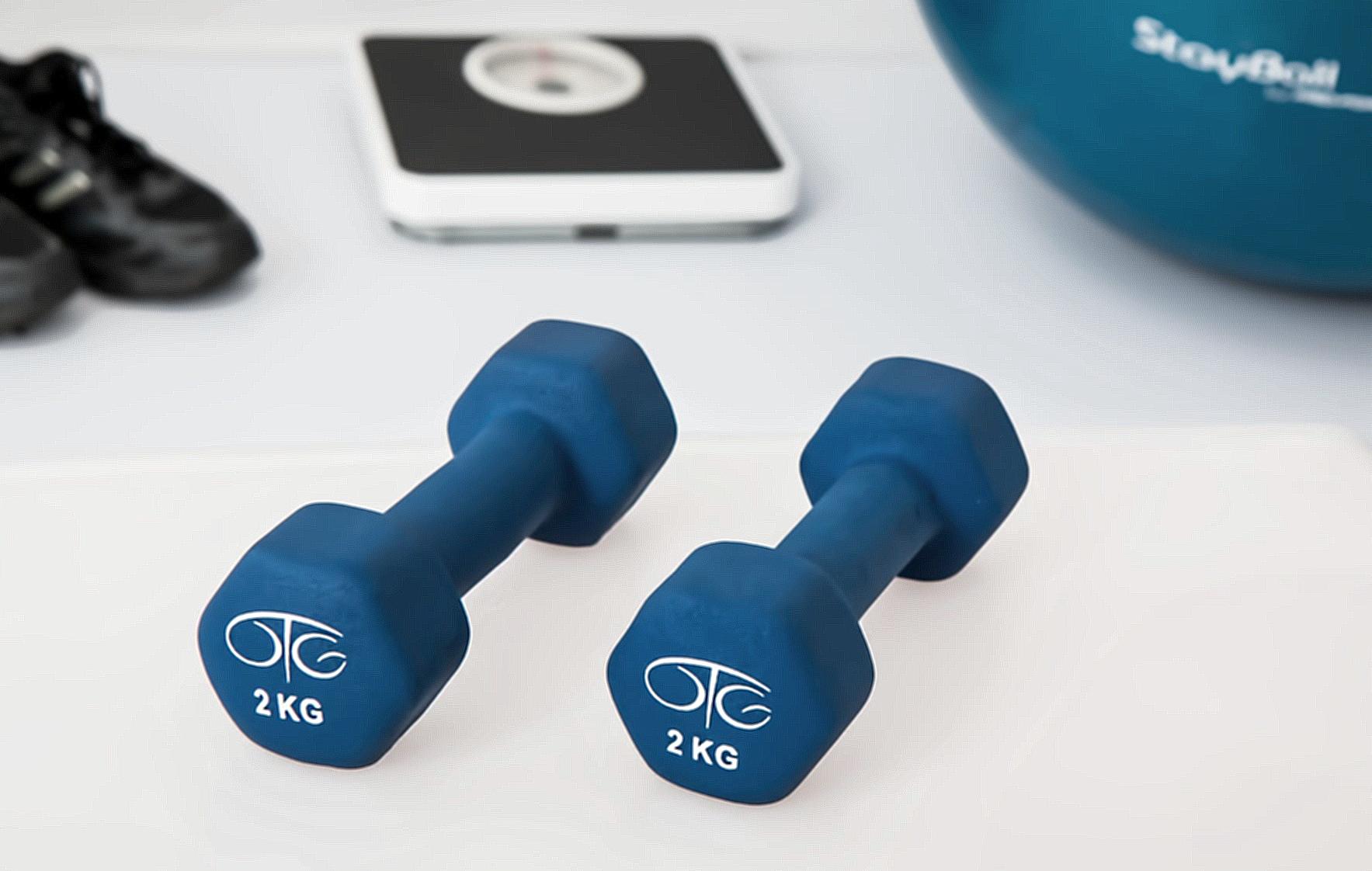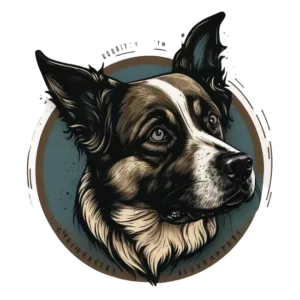
As a new German Shepherd puppy parent, it can be difficult to know where to start when it comes to creating a tailored exercise plan that fits your pet’s needs. With a little knowledge and preparation, however, you can create an activity plan that will not only benefit your puppy’s physical and mental health, but also help them to become a more well-rounded companion. In this blog post, we’ll discuss the benefits of an exercise chart for German Shepherds, tips on incorporating activity into your puppy’s life, activities to help stimulate growth in German Shepherd puppies, proper nutrition to support exercise plans, choosing the right breed-specific equipment for training, developing proper habits as early as possible, and the importance of regular vet visits for your puppy’s health. With these tips and ideas, you can create a tailored exercise plan that is perfect for your German Shepherd puppy.
Benefits Of An Exercise Chart For German Shepherds
As a dog owner, you understand that proper exercise and good nutrition are essential for your puppy’s overall health and well-being. An exercise chart is an excellent way for German Shepherds, and all other dog breeds, to get the physical and mental stimulation needed for them to reach their full potential.
Increased Physical Endurance
Creating a chart that includes healthy amounts of exercise and rest time will help build a German Shepherd’s physical endurance. Regular and consistent amounts of exercise will help keep your pup’s energy levels up and help avoid health problems in the future. Exercise and playtime should be tailored to your puppy’s individual needs based on age, size, and energy level. If you are uncertain of what is best for your dog, consult a vet or seek advice from a certified trainer.
Improved Mental Stimulation
In addition to helping develop physical endurance, exercise also stimulates the mind. Mental stimulation is important in helping your puppy understand its environment, recognize new sights and smells, and stay sharp. An exercise chart helps make sure that owners are treating their pup to enough activity and giving them the opportunity to engage their imagination.
Stronger Bond Between Puppy and Owner
Developing an exercise chart is also a great way to build a strong bond between the puppy and their owner. Performance activities such as agility, obedience, or nosework are all great options for owners and pups to enjoy together. Regular walks and visits to a local park also help with socialization and are ideal for forming positive relationships.
Enhanced Socialization
Exercising with other animals and people can help German Shepherds become more secure in their environment and properly socialize with those around them. Incorporating regular outdoor activities in the exercise chart will help them interact and become comfortable around other animals. Walking and playtime are also opportunities for owners to introduce their puppies to a variety of different people.
Increased Social Interaction
Encouraging owner, family, and friends to join in the exercise fun can increase a puppy’s social interaction. Activities such as swimming, playing fetch, or agility courses are all excellent options to get everyone involved. Encouraging others to get involved can help German Shepherds develop a sense of familiarity with their owner’s social groups, allowing them to become more comfortable around familiar faces.
Tool for Establishing Appropriate Habits
Ultimately, an exercise chart is an important tool for teaching your puppy the habits that you want them to adopt. Setting up a habit-specific chart helps owners track and understand what works when it comes to training their pup. It is also an excellent tool for understanding bad habits to avoid and the benefits that come from instilling good behaviors in the puppy. Exercise charts give German Shepherds an opportunity to learn and grow in an enjoyable, positive environment, bringing everyone closer together.

Creating An Effective And Tailor-Made Exercise Plan For Your German Shepherd Puppy
Taking care for your German Shepherd puppy includes developing an exercise plan to ensure their health and physical well-being. Puppies have different needs from adult German Shepherds, so it’s important to develop a tailored exercise plan for your puppy.
Consider The Puppy’s Age
Puppies grow up quickly and their exercise requirements need to be adapted to their age. Generally, puppies aged 7-12 months need up to 45 minutes of activity per day. This can be a combination of walking, playing and obedience training. You can start taking your German Shepherd puppy out on deep walks as soon as they are vaccinated, and they can begin longer walks after they have received two sets of vaccinations.
Establish A Routine
Another important key to an effective exercise plan for your German Shepherd puppy is establishing a consistent routine that suits your puppy’s needs. Having a consistent routine helps to build the trust and bond between you and your puppy, and also works to manage their energy and enthusiasm.
Avoid Over-Exercising
It’s important to avoid over-exercising your German Shepherd puppy. Over-exercising your puppy can lead to injury and fatigue. Taking breaks is an important part of any exercise plan.
Variety Is Key
An effective exercise plan for your German Shepherd puppy should include a variety of activities to help their mental and physical development. This can include playing fetch, engaging in hide-and-seek and participating in agility training or interactive dog toys.
Practice Socialization
Regular socialization of your German Shepherd puppy is necessary to help prevent aggression or other dangerous behaviors. Taking your puppy for a walk in a safe, public space helps to socialize them and get them used to different places and people. This can also be an opportunity to introduce your puppy to new sounds, sights and smells.
Exercising your German Shepherd puppy is important for their health and development. Taking into consideration your puppy’s age, establishing a consistent routine, ensuring you don’t overexercise your puppy, providing a variety of different activities and regular socialization are all essential for aiding the development of a healthy, happy puppy.

Tips On Incorporating Activity Into Your Puppy’s Life
When it comes to exercise for German Shepherds, no two GSDs are the same. Depending on the size, breed, and drive of your pup, the amount of activity they require can significantly vary from another. However, there are several universal tips and tricks to get the best exercise plan in place for your pup, from the puppy stage all the way to the adult.
Establish Your Dog’s Activity Level
Before committing to any specific kind of exercise regiment for your puppy, it’s important to determine the activity level that is right for your GSD. Allowing your puppy time to focus on and interact with their environment is incredibly beneficial during the young stage. Subsequently, providing structured and intentional exercise opportunities ensures they receive a healthy helping of physical activity daily.
It’s important to remember that while establishing their limitations, boundaries, and regulations through appropriate behavior, exercise and activities can be a great way to keep your pup’s energy channeled in the right direction. Allowing puppies and young dogs to have periods of activity can be incredibly beneficial in beating back boredom, alleviating anxiety and stress and also helping to provide a sense of regular structure.
Vary Types of Exercise and Activity
Including both structured and “free-play” activities in your exerciser regimen will provide a much-needed mental and physical challenge for your puppy. Structured activities such as training, fetch, playtime on the leash, walking, treadmill running and even basic agility can help a puppy to stay in shape and offer the mental stimulation that any dog needs.
On the other hand, “free-play” activities such as those your puppy will take part in with other dogs, including gang-up play, chase, sniffing and digging can also be beneficial in expending energy, making socializing experiences, and providing an outlet for exploration.
Introduce New Activities Gently
Introducing new activities or ramping up activity levels should always be done gradually, giving your pup the time to adjust. Rushing into extensive exercise regimens or activities right away can lead to physical or psychological injuries and exacerbate bad behaviors such as distraction and impulsivity.
It’s important to remember to take it slow when introducing new activities to your pup and start at an appropriate level. Additionally, breaking training routines into shorter, interactive sessions allow for a more comfortable transition in your puppy.
Respond Appropriately to Bad Behavior
When exercising, it’s important to remember that if your pup does not respond appropriately to expectations or commands, it is okay to use verbal cues and redirection exercises. Every GSD is different and understanding which forms of correction work best for your dog is an important skill to develop.
It’s paramount to practice patience with puppies and young dogs while they take the time to understand instructions. It is also important to practice positive reinforcement behaviors, such as using praise and treats to reward good behavior during activities. Additionally, providing mental challenges and break periods can be useful in providing your pup with ample learning opportunities.
Overall, exercise and physical activity can be a great tool for fostering a well placed and well-behaved adult dog. Taking the time to establish physical limitations, mixing up activities and introducing them slowly, and being aware of how to respond to bad behavior is essential to providing the best exercise environment for your puppy.

Activities To Help Stimulate Growth In German Shepherd Puppies
Want to ensure your German Shepherd puppy remains healthy, happy, and mentally stimulated? Then you’ll want to invest in activities that not only provide your pup with endless amounts of entertainment, but also arm them with the necessary skills to conquer new situations. Below you will find a detailed exercise chart that provides you with the activities you can use to promote the healthy development and well-being of your pup.
Providing Mental Stimulation
One way to ensure your pup’s mental health is to incorporate activities such as agility obstacles, puzzles, and brain games. This will help to keep their minds sharp and alert. In addition to that, expose your pup to new smells, people, and sounds on a regular basis to help them better adjust to these new situations without feeling overwhelmed.
Large Outdoor Enclosures
If you’re wanting to give your pup a place to run, explore, and get some exercise, a large outdoor enclosure can be a great addition to your home. With plenty of space, they can run around and have fun while getting their necessary daily exercise. In addition to that, adding elements such as tunnels, logs, and other items that promote problem-solving techniques can help to provide enrichment and stimulate the minds of your pup.
Long Walks
Walking your German Shepherd pup not only helps with potty training, but it can also encourage them to lead the walk. Long walks in a variety of locations can help your pup better adjust to their surroundings and make them more confident. Introducing your pup to different terrains like gravel or sand can also help to keep them interested and mentally stimulated as they become more accustomed to new things.
Interactive Toys and Games
Incorporating interactive activities such as fetch and tug of war can help to keep your pup content for hours. Plush toys with squeakers and kongs stuffed with treats are two great ways to keep your pup engaged and entertained. Just make sure to check the toys regularly for any signs of wear and tear that may mean it’s time to replace them.
By incorporating the above activities into your German Shepherd puppy’s life, you can effectively ensure your pup stays healthy, happy, and mental stimulated, thus promoting the necessary skills needed to conquer new situations.

Proper Nutrition To Support Exercise Plans
A proper nutritional plan for a German Shepherd puppy is important to support an exercise regimen and ensure their overall health. Proper nutrition helps to provide the puppy with the energy needed to exercise and grow properly, while also helping to maintain the essential vitamins, minerals, and macronutrients.
How Proper Nutrition Helps German Shepherd Puppies
A German Shepherd puppy’s diet is essential for the long term development and keeping them healthy and in shape. Proper nutrition helps to provide the necessary nutrients to their bodies while they remain energetic and active. It also helps to maintain their body weight and support their developing joints and bones.
Ideal Macronutrient Ratios For Active German Shepherd Puppy
The ideal macronutrient ratio for an active German Shepherd puppy will depend on their age and activity level. Puppies between 4 and 12 months should be eating a moderate to high protein-based diet with about 40% carbohydrates and 20% fat. Puppies older than 12 months should have a slightly different ratio, favoring more proteins and moderate amount of carbohydrates and fats.
Quality Calorie Sources
The quality of calorie sources will also make a difference when it comes to supporting an exercise plan. Quality calorie sources include lean meats and dairy products, legumes, tubers, and leafy greens. It’s also important to include unprocessed grains, nuts, and seeds.
Recommended Portions Based On Genetics, Weight, And Activity Levels
The recommended portions will depend on your puppy’s age, weight, and activity levels. Generally speaking, puppies need to be fed around 2-3 times a day. The amount of food they should be eating each day will depend on their age, weight, and exercise intensity.
Foods To Avoid
It’s important to note that puppies should avoid foods that are high in saturated fats, such as fast food and processed products. Foods such as beef, lamb, and pork should also be avoided as the higher fat content can cause obesity in puppies.
Hydration Requirements & Benefits
Puppies need to stay hydrated in order to support their active lifestyle. Puppies should be drinking around 8-10 ounces of water per day, with more being added when they’re active. This helps them stay hydrated and absorb the necessary nutrients from their food.
Adding Supplements Into Your Puppy’s Diet
Adding nutritional supplements into your puppy’s diet can help provide them with extra vitamins and minerals they need. Supplements such as fish oil and multivitamins can help to ensure your puppy is getting enough essential nutrients to support an exercise plan. Just be sure to speak with your veterinarian before making any changes to your puppy’s diet.

Choosing The Right Breed-Specific Equipment For Training
German Shepherds are well-known for their loyalty and intelligence, making them great life-long companions. They’re a popular breed and they often need specific training to get them used to handling, leash walking, basic commands, and agility exercises.
To ensure that their particular needs are met, it’s important to invest in the right breed-specific training equipment.
Benefits of Using Breed-Specific Training Equipment
Using breed-specific training equipment can make the job of training German Shepherds much easier and more enjoyable. By using equipment that is specifically designed for their size and build, they can get the most out of their training sessions with less effort.
By investing in breed-specific training equipment, owners of German Shepherds can also benefit from the tailored comfort and control that comes with the products. This adds an extra layer of security and makes training more enjoyable for both the dog and the trainer.
Types of Breed-Specific Training Equipment
When it comes to training a German Shepherd, there are a few pieces of equipment that should be considered. These include:
Leashes
Leashes come in various sizes and designs to fit the needs of your German Shepherd. It’s important to pick up one that is the correct length and width to make training easier.
Leashes with lightweight, padded handles are more comfortable to handle and provide better grip when needed. They should be long enough to allow your German Shepherd to move freely, but not too long as to put them in danger.
Harnesses
Harnesses are a great type of equipment for training your German Shepherd, as they provide better control and allow for extended walks or jogs. It’s important to find one that fits your dog’s size and body shape for better free movement and comfort.
Harnesses come in different designs and colors and can often be decorated with rhinestones or studs. While these may look attractive, it’s important to remember that they can also add weight to the harness, making it uncomfortable for your dog.
Collars
Collars are one of the most important pieces of training equipment for German Shepherds. As with leashes and harnesses, it’s important to find one that fits properly and is comfortable. The correct collar should sit snug and not be too tight, as this can lead to choking and difficulty breathing.
When selecting a collar, be sure to pick one that is made of durable material and has a strong clasp. It should also be secure enough to prevent your dog from slipping out and becoming lost.
Toys
Toys can be a great way to reward your German Shepherd for completing their training and for providing them with mental stimulation. Whether it’s tug toys, balls, rope toys or interactive puzzles, it’s important to pick something that is the correct size and durable enough to withstand long hours of play.
It’s also important to keep switching up the options so that the dog does not become bored or disinterested.
Quality Brands for German Shepherds
When it comes to purchasing training equipment for German Shepherds, there are a few quality brands worth looking into. These include:
-
Lupine Pet: Lupine Pet offers strong, bright and vibrant leashes and collars made with heavy-weight webbing that is weatherproof and machine-washable.
-
Ruffwear: Ruffwear provides high-quality suits and harnesses that are designed with comfort and control in mind. They come in a variety of sizes and colors so you can find the perfect fit and look.
-
KONG: KONG has a selection of toys specifically designed for German Shepherds with strong, durable rubber that can withstand their powerful jaws.
Stories of German Shepherds Benefitting from Breed-Specific Training Equipment
There have been many inspiring stories of German Shepherds transforming for the better through the use of breed-specific training equipment. One of the most memorable ones is the story of Zeke – a German Shepherd who was rescued from a life of turmoil.
Once Zeke was given the right type of equipment, he began to open up and engage in more positive behaviors. His owners took him for regular walks with a well-fitted harness and he was trained with personalized toys to keep him engaged and motivated. Zeke soon earned the trust of his owners and was eventually adopted into a loving home.
Safety and Health Considerations
When purchasing breed-specific training equipment for your German Shepherd, there are a few safety and health considerations to take into account. First of all, it’s important to find nature-friendly, chemical-free products that are designed to last with minimal wear and tear.
Also, make sure the pieces of equipment are comfortable and not too restrictive. Too-tight collars and harnesses can not only lead to discomfort, but they can also cause medical issues in your dog over time.
Finally, be sure to regularly inspect the equipment for signs of wear and tear and replace it when necessary. This will ensure that your German Shepherd stays safe and healthy during their training sessions.

Developing Proper Habits As Early As Possible
Raising a German Shepherd puppy (GSD) is an incredible yet daunting task. You want them to develop the best possible habits from a young age. Positive reinforcement and reward-based training is key for beginners who want to establish trust and provide guidance for their pup.
A reward-based training instills positive behaviors and boosts your pup’s confidence. It involves providing verbal praise, treats, or a combination of the two to reinforce expected conduct. Reward-based training is not only more effective, it encourages the bond between you and your pup.
Proper Exercise Is Key To A Happy, Healthy Pup
Exercise is essential for GSD puppies to stay healthy and happy. The amount of exercise they need depends on their age, size, breed, and level of sensitivity.
Under nine weeks, puppies do not need extensive exercise as their bodies are still developing. Low-impact activities like baby feedings, massages, and laps around the house will suffice for their day-to-day needs.
From nine weeks to five months, exercise gradually becomes more important. Puppies can slowly increase their daily exercise to match their age and development. Normal activities include light play, walks, and additional treats and chews. To build muscle, you may consult a professional trainer for strength-building activities.
By six to fifteen months, your pup will have all the necessary muscle and joint strength to match the activity level of a young adult. Suggested exercises include walks, runs, trainings, and playtime.
Over fifteen months, your pup can partake in activities like agility jumps, fly ball, and official obedience classes.
Socialization Is Also Essential
Socialization is key to ensure your pup is properly habituated to people, animals, and its environment.
A GSD puppy should start socializing as early as possible and be exposed to new sights, sounds, smells, and experiences. It is important to remain patient and gentle throughout the process, never pushing your pup when it appears overwhelmed and uncomfortable.
You may start off with the most basic exercises, such as introducing your pup to family and friends, or taking it out on walks around sites it is already familiar with. As your pup grows more comfortable, gradually introduce it to to more people and places and new experiences it can become used to.
Establishing Leadership
Properly establishing a hierarchy is also essential. Although you and your family are not wolves, some of the same fundamental principles are important when it comes to training your pup.
It should understand that you are the leader of the pack and should be respected as such. To do that, you should use positive reinforcement-based methods such as providing lots of positive attention and physical affection, only showing patience and consistency, and using treats as rewards for good behavior.
You should also pay attention to your pup’s responses as you interact with it. If it behaves in a way that is not acceptable, you should act with gentle authority. Do not yell or hit it, as this does not convey the message of respect fully.
Finally, when reprimanding your pup for unacceptable behavior, ensure that it does not feel punished or subservient.
Examples Of Successful Habits
There are plenty of examples to provide motivation for developing good habits in GSD puppies. For instance, owners of notable GSDs like Batou, Jax, and Jojo have shared online tutorials and advice that teach exactly how they practiced positive reinforcement-based training, proper exercises, and proper socialization with their puppies. Doing so has enabled them to achieve success in managing their pup’s behaviors.
Additionally, it’s a good idea to share stories of successes and failures to convey the importance of developing proper habits. Successes serve as great motivation for young owners, while stories of failures can be used to emphasize the consequences of bad behavior.
Developing Habits Despite Setbacks
Raising a GSD puppy can be an emotional journey full of highs and lows. No matter how many setbacks and failures you experience, continue to remain as patient and consistent as possible. Utilize all the techniques mentioned in order to mold better habits in your puppy. With enough determination, dedication, and practice, you will begin to see the results you long for.

The Importance Of Regular Vet Visits For Your Puppy’s Health
As a responsible pet owner, one of the most important things you can do for your German Shepherd puppy is to make sure they have regular vet visits. When your puppy is still young, it’s important to get them accustomed to the vet and the process. Not only will the vet be able to provide helpful tips for keeping your pet healthy, but it also provides you with peace of mind that your pet is in good health.
Benefits Of Regular Vet Visits
Visiting the vet on a regular basis helps with early detection and prevention of any health issues that may arise. During each visit, your vet can administer vaccines, perform routine lab tests and check for any signs of illness before symptoms even start to appear. Catching any illnesses early is key in helping to keep your pet healthy, which is why regular vet visits are so important.
Another benefit of regular vet visits is that it helps to build a bond between your pup and the vet. Being able to have a trusting relationship with your regular vet can be a great advantage throughout the life of your pet.
Structuring Vet Visits
When deciding to take your puppy to the vet, it’s important to keep in mind when the best time to go would be. Generally, the recommended time is when puppies are 8-10 weeks old, as this is usually when the first set of shots start. After that, it’s suggested to visit the vet every four to six weeks until they are 16 weeks old.
In terms of the services needed during these visits, the vet will most likely need to administer vaccines, check for any illnesses and answer any questions or concerns you may have. After the first visit, the vet will be able to recommend how often your pet should come in for check-ups and preventive care.
How Regular Visits Saved Our Puppy’s Life
I remember the day our German Shepherd puppy became part of the family. We were so excited and I was looking forward to taking him to the vet for a check-up to make sure he was healthy and to get him started on his vaccines. We noticed he was energetic and playful as we took him to his first vet appointment. Little did we know that a few weeks later we would be making a life-saving decision.
During one of his check-ups, the vet found that our puppy was showing signs of a potentially serious condition. He explained all the potential long-term impacts and explained the severity of the issue. We made the decision then and there to take him in for treatment. Thanks to the vet’s early diagnosis and the regular appointments, our pup was saved.
Additional Tips For Vet Visits
To ensure each vet visit is as beneficial as possible, there are a few additional tips you can keep in mind. Taking notes during each vet visit can help you keep track of any changes with your German Shepherd puppy, as well as any tips or advice the vet may give you. Similarly, keeping track of your puppy’sweight can be a great way to monitor their health.
Additionally, it’s important to be prepared for each vet visit. Reading any materials or documents that the vet has provided the before the visit can help you be more informed about the things happening with your pup. Either way, preparing for each vet visit is key to make sure things run as smoothly as possible.
Regular vet visits are an essential part of pet ownership and being a responsible pet parent. Not only do they help with early detection of illnesses, but they build a trusting bond between you, your German Shepherd puppy, and your vet. When structuring your pup’s vet visits, it is important to stay up to date on the recommended vaccine schedule, services needed and any other information related to their health. Taking the necessary precautions and visiting the vet on a regular basis could save your puppy’s life, just like it did ours.

Conclusion
Creating an exercise plan for your German Shepherd puppy doesn’t have to be a daunting endeavor. With a little preparation, you can create a plan specific to your beloved pup’s needs. Keep in mind the importance of incorporating activities that stimulate growth, providing proper nutrition, and selecting the right breed-specific equipment for training. Additionally, work on developing proper habits early on, and be sure to include regular vet visits for your pup’s health. When all of these components are included, you’ll have a custom exercise plan tailored to your German Shepherd pup that will ensure a beneficial outcome from activity. Follow this German Shepherd puppy exercise chart and you and your pup will never be deprived of joy, while promoting a safe, healthy lifestyle.



